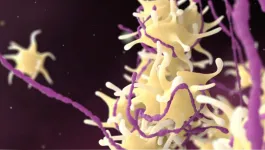What is the epidemiology of TTP?
4 min
Acute episodes
- Are associated with >90% mortality if untreated.4
- Can be triggered by certain medicines (e.g., quinine, gemcitabine), infections (e.g., HIV infection), surgery, or pregnancy5-10 and have also been reported after vaccination.11,12
cTTP
- While the prevalence of cTTP is uncertain, the diagnosed prevalence is estimated to be approximately 0.5-2 per million individuals.13
- Frequency equally distributed between males and females.7
- Variable age of initial presentation14:
- 30–50% within the first 5 years of life (often misdiagnosed as other conditions or immune thrombocytopenia)
- 50% asymptomatic until adulthood, presenting with known risk factors such as pregnancy
- Diagnosis is often delayed, leading to suboptimal treatment.15
iTTP
- Estimated incidence is 3.43 cases/1,000,000 people/year.16 This is variable, depending on where and when the study was performed.
- iTTP mainly affects adults, peaking at age 30–50 years in Europe and the United States; it is 2.5–3.5 times more common in women than men.7
Share this article with a colleague
Share this article with a colleague
This website is intended for an international audience of healthcare professionals outside of the US & UK. It should not be shared with patients, carers or the general public.
Abbreviations, Glossary and References
Abbreviations
cTTP; Congenital TTP
iTTP; Immune-mediated TTP
TTP; Thrombotic thrombocytopenic purpura
Glossary
ADAMTS13; ADAMTS13 (A Disintegrin And Metalloproteinase with ThromboSpondin motifs 13) is a constitutively active enzyme (plasma metalloprotease) that catalyzes the breakdown of ultra large and high molecular weight von Willebrand factor (VWF) into smaller multimers, reducing their thrombogenic potential, and maintaining hemostasis.7,20
Incidence; The rate of new cases or events over a specified period for the population at risk for a certain event.
Microangiopathic hemolytic anemia (MAHA); Process of red blood cell destruction within the microvasculature accompanied by thrombocytopenia due to platelet activation and consumption. Thrombotic thrombocytopenic purpura (TTP) and hemolytic uremic syndrome (HUS) are primary forms of thrombotic microangiopathies.21
Prevalence; The proportion of a particular population found to be affected by a medical condition at a specific time.
Schistocyte; Circulating fragments of red blood cells commonly seen in blood smears from patients with thrombotic microangiopathies including TTP.22
Thrombocytopenia; Refers to a state of reduced peripheral platelets below normal levels (150x109/L) and can be caused by a wide variety of aetiologies that either decrease platelet production or increase platelet consumption.23
Thrombotic microangiopathy (TMA); TMA includes a diverse set of syndromes that can be hereditary or acquired, which can occur in children and adults with sudden or gradual onset.
TMA syndromes, despite being diverse, have a common set of clinical and pathological features: MAHA, thrombocytopenia, organ injury, vascular damage manifested by arteriolar and capillary thrombosis with characteristic abnormalities in the endothelium and vessel wall.6
Thrombotic thrombocytopenic purpura (TTP); TTP is a type of MAHA presenting with moderate or severe thrombocytopenia. There is associated organ dysfunction, including neurologic, cardiac, gastrointestinal and renal involvement; oliguria or anuric renal failure requiring renal replacement therapy is not typically a feature. TTP is confirmed by a severe deficiency (<10%) of ADAMTS13 activity.24
von Willebrand factor (VWF); VWF plays two key roles in hemostasis: 1) in primary (platelet-mediated) hemostasis, VWF binds to collagen and platelets thus promoting platelet activation and aggregation, and 2) in secondary (coagulation factor mediated) hemostasis VWF binds factor VIII (FVIII) protecting FVIII from rapid clearance. When VWF binds to collagen following vascular injury, it releases FVIII, leading to FVIII activation and initiation of the coagulation cascade.25,26
References
- Stanley, M., R. Killeen, and J. Michalski, Thrombotic Thrombocytopenic Purpura. [Updated 2023 Apr 7]. In: StatPearls [Internet]. Treasure Island (FL): StatPearls Publishing. 2024.
- Joly, B.S., P. Coppo, and A. Veyradier, Thrombotic thrombocytopenic purpura. Blood, 2017. 129(21): p. 2836-2846.
- Oladapo, A.O., et al., Patient Experience with Congenital (Hereditary) Thrombotic Thrombocytopenic Purpura: A Conceptual Framework of Symptoms and Impacts. Patient, 2019. 12(5): p. 503-512.
- Amorosi, E.L. and J.E. Ultmann, Thrombotic thrombocytopenic purpura: Report of 16 cases and review of the literature. Medicine, 1966. 45(2): p. 139-160.
- Blombery, P. and M. Scully, Management of thrombotic thrombocytopenic purpura: current perspectives. J Blood Med, 2014. 5: p. 15-23.
- George, J.N. and C.M. Nester, Syndromes of thrombotic microangiopathy. N Engl J Med, 2014. 371(7): p. 654-666.
- Kremer Hovinga, J.A., et al., Thrombotic thrombocytopenic purpura. Nat Rev Dis Primers, 2017. 3: p. 17020.
- Scully, M., et al., Guidelines on the diagnosis and management of thrombotic thrombocytopenic purpura and other thrombotic microangiopathies. Br J Haematol, 2012. 158(3): p. 323-335.
- Scully, M., Hereditary thrombotic thrombocytopenic purpura. Haematologica, 2019. 104(10): p. 1916-1918.
- Scully, M., et al., A British Society for Haematology Guideline: Diagnosis and management of thrombotic thrombocytopenic purpura and thrombotic microangiopathies. Br J Haematol, 2023. 203(4): p. 546-563.
- Saluja, P., et al., Thrombotic thrombocytopenic purpura (TTP) after COVID-19 vaccination: A systematic review of reported cases. Thromb Res, 2022. 214: p. 115-121.
- Yavasoglu, I., Vaccination and Thrombotic Thrombocytopenic Purpura. Turk J Haematol, 2020. 37(3): p. 218-219.
- Sukumar, S., B. Lammle, and S.R. Cataland, Thrombotic Thrombocytopenic Purpura: Pathophysiology, Diagnosis, and Management. J Clin Med, 2021. 10(3): p. 536.
- Mansouri Taleghani, M., et al., Hereditary thrombotic thrombocytopenic purpura and the hereditary TTP registry. Hamostaseologie, 2013. 33(2): p. 138-143.
- Pereira, A., et al., Thrombotic thrombocytopenic purpura/hemolytic uremic syndrome: a multivariate analysis of factors predicting the response to plasma exchange. Ann Hematol, 1995. 70(6): p. 319-323.
- Adeyemi, A., et al., Epidemiology, treatment patterns, clinical outcomes, and disease burden among patients with immune-mediated thrombotic thrombocytopenic purpura in the United States. Res Pract Thromb Haemost, 2022. 6(6): p. e12802.
- Beranger, N., et al., Management and follow-up of pregnancy-onset thrombotic thrombocytopenic purpura: the French experience. Blood Adv, 2024. 8(1): p. 183-193.
- Mariotte, E., et al., Epidemiology and pathophysiology of adulthood-onset thrombotic microangiopathy with severe ADAMTS13 deficiency (thrombotic thrombocytopenic purpura): a cross-sectional analysis of the French national registry for thrombotic microangiopathy. Lancet Haematol, 2016. 3(5): p. e237-245.
- Moatti-Cohen, M., et al., Unexpected frequency of Upshaw-Schulman syndrome in pregnancy-onset thrombotic thrombocytopenic purpura. Blood, 2012. 119(24): p. 5888-5897.
- Markham-Lee, Z., N.V. Morgan, and J. Emsley, Inherited ADAMTS13 mutations associated with Thrombotic Thrombocytopenic Purpura: a short review and update. Platelets, 2023. 34(1): p. 2138306.
- Arnold, D.M., C.J. Patriquin, and I. Nazy, Thrombotic microangiopathies: a general approach to diagnosis and management. CMAJ, 2017. 189(4): p. E153-E159.
- Zini, G., et al., ICSH recommendations for identification, diagnostic value, and quantitation of schistocytes. Int J Lab Hematol, 2012. 34(2): p. 107-116.
- Gauer, R.L. and M.M. Braun, Thrombocytopenia. Am Fam Physician, 2012. 85(6): p. 612-622.
- Scully, M., et al., Consensus on the standardization of terminology in thrombotic thrombocytopenic purpura and related thrombotic microangiopathies. J Thromb Haemost, 2017. 15(2): p. 312-322.
- Rauch, A., et al., On the versatility of von Willebrand factor. Mediterr J Hematol Infect Dis, 2013. 5(1): p. e2013046.
- Stockschlaeder, M., R. Schneppenheim, and U. Budde, Update on von Willebrand factor multimers: focus on high-molecular-weight multimers and their role in hemostasis. Blood Coagul Fibrinolysis, 2014. 25(3): p. 206-216.



